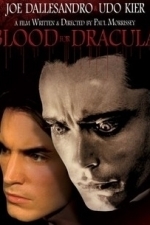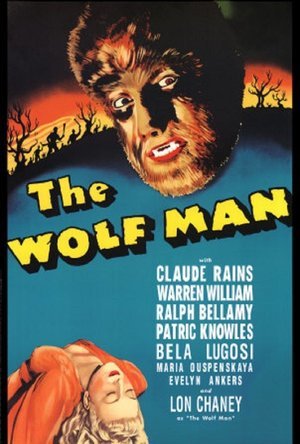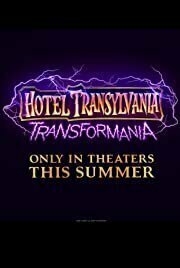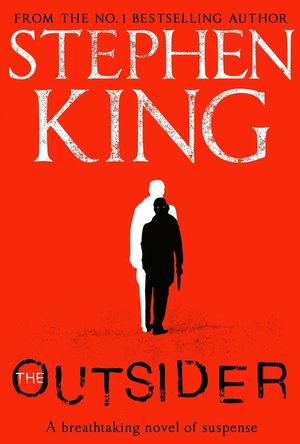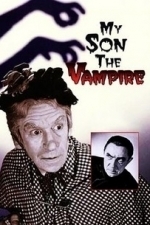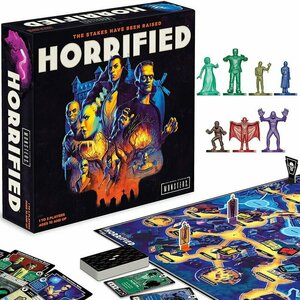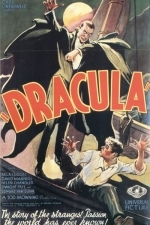Search
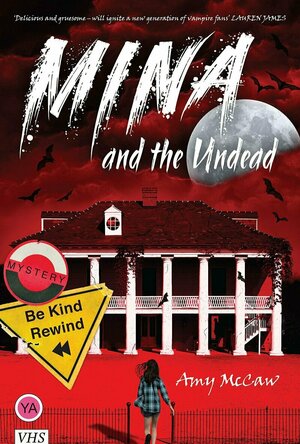
Mina and the Undead (Mina and the Undead #1)
Book
'A dark and thrilling tale of the paranormal. With haunted houses, family secrets and murder galore,...
Rob Zombie recommended The Black Cat (1941) in Movies (curated)
Lev Kalman recommended Blood for Dracula (1974) in Movies (curated)
Awix (3310 KP) rated The Wolf Man (1941) in Movies
May 8, 2021
The first Universal werewolf film to really make an impression doesn't have the same iconic status as either Frankenstein or Dracula, but is still a much more proficient movie in purely technical terms. Larry Talbot is plunged into a world of misery and horror when he returns to his family home in Wales; many visitors to the principality will probably empathise, but his experience is particularly bad when he is bitten by a gypsy and becomes a werewolf.
Solid story, decently structured; the wolf man make-up is honestly not that great, and neither is Chaney's performance, but the rest of the cast is decent and the plot rattles along. Notable as the film which established the 'rules' of lycanthropy as far as mainstream cinema is concerned. As ever, probably more interesting from a historical point of view than as a genuine piece of entertainment, but still a film which has deservedly resonated in the culture.
Solid story, decently structured; the wolf man make-up is honestly not that great, and neither is Chaney's performance, but the rest of the cast is decent and the plot rattles along. Notable as the film which established the 'rules' of lycanthropy as far as mainstream cinema is concerned. As ever, probably more interesting from a historical point of view than as a genuine piece of entertainment, but still a film which has deservedly resonated in the culture.
Chris Sawin (602 KP) rated Hotel Transylvania 4 (2021) in Movies
Jan 22, 2022
The transformation sequences. (1 more)
The 2D animated end credits
Genndy Tartakovsky not directing (2 more)
Humor exchanged for annoying behavior
Feels almost like a soft reboot for a final film.
A Monstrous Monstrosity
Hotel Transylvania: Tranformania is the final film in the Hotel Transylvania franchise. With Genndy Tartakavsky no longer directing (he co-writes and executive produces this time around) and Adam Sandler and Kevin James not returning (Brian Hull and Brad Abrell now voice Dracula and Frankenstein), Transformania takes an awkward step back from the previous three films.
Despite some character designs (Bela in the second film, the Kraken in the third) and some tremendous end credit animations that are done in a very recognizable Tartakavsky style (think Dexter’s Lab or Powerpuff Girls), the films are mediocre at best and yet became a billion dollar franchise.
Hull and Abrell do a decent job matching their voices to the Drac and Frank characters. You may not have noticed the characters were voiced by someone else if you hadn’t known beforehand. However, the animation looks noticeably different. Maybe new directors Jennifer Kluska and Derek Drymon are to credit for that. Kluska was a storyboard artist on Hotel Transylvania 2 and 3 while Drymon was an executive producer of Adventure Time and was a storyboard artist on The Spongebob Squarepants Movie.
The film was also moved around several times thanks to COVID and the pandemic. Sony Pictures Releasing eventually nixed the film’s theatrical run and sold distribution rights to Amazon Studios. This is the only Hotel Transylvania film to be released directly to a streaming platform.
Considering that this is the fourth film, Transformania basically rewrites several characters to an extent that it ignores key details from other films. Johnny is now akin to Homer Simpson since he is dumber than he has ever been here. He had a stoner or frat boy with a heart of gold kind of vibe about him originally. He was very mellow by nature, but had seen a good chunk of the world and knew more than his behavior let on. He had stories even though he was young and he was likeable. Transformania turns him into a dumb and unfunny dork that is borderline offensive due to how annoying he is.
Dracula has lost whatever made him somewhat charming in the previous three films, as well. In Transformania, he’s looking to settle down with Ericka and retire from running the hotel. The intention is to give the hotel to Mavis and Johnny, but all of a sudden Dracula hates Johnny. The first three films are built around how close Johnny and Dracula become. Now Dracula just finds Johnny unbearable.
After establishing in the second film that Dennis is part vampire and has powers, that concept is totally erased in Transformania. Dracula hypnotizes Dennis in the beginning of the film and he remains that way for the bulk of the film without ever utilizing any sort of power or doing anything remotely relevant.
Instead of downright telling Johnny that he can’t stand him, Dracula lies and says that he can’t leave the hotel in the hands of a human; it can only be inherited by monsters. Johnny then discusses the matter with Abraham Van Helsing who uses his Monsterfication Ray to turn Johnny into a giant lizard-like monster. But the ray can also turn monsters into humans. Once Dracula discovers what Johnny has done, he attempts to turn Johnny back before Mavis finds out. The plan backfires and Dracula gets hit with the ray and is turned human. His friends Wayne, Griffin, Murray, and Frankenstein are also turned human. If a cure isn’t found, the results may be permanent.
The highlight of the film is the transformation sequences since they are noticeably inspired by the horror film genre; specifically An American Werewolf in London. The end credits sequence is also done in a similar style to the first three films, so that sequence is fairly entertaining as well.
Transformania otherwise feels like a downgrade all around and the bar wasn’t all the high to begin with. As expected, there is a dancing sequence that may or may not be something you look forward to. None of the gags come off as humorous as every character mostly seems to be aiming to be more obnoxious than the other. The “fun” lies within seeing the monster characters as humans. The most notable is Griffin who has been totally invisible until now.
Hotel Transylvania: Transformania had a lot of obstacles relating to its release and after viewing the film you can understand why. It’s a lukewarm sendoff that mostly feels like a lethargic attempt to recapture its former glory. It’s built around an entertaining concept that it doesn’t fully capitalize on. It ultimately obliterates character traits for trite gags and cliché punch lines.
Despite some character designs (Bela in the second film, the Kraken in the third) and some tremendous end credit animations that are done in a very recognizable Tartakavsky style (think Dexter’s Lab or Powerpuff Girls), the films are mediocre at best and yet became a billion dollar franchise.
Hull and Abrell do a decent job matching their voices to the Drac and Frank characters. You may not have noticed the characters were voiced by someone else if you hadn’t known beforehand. However, the animation looks noticeably different. Maybe new directors Jennifer Kluska and Derek Drymon are to credit for that. Kluska was a storyboard artist on Hotel Transylvania 2 and 3 while Drymon was an executive producer of Adventure Time and was a storyboard artist on The Spongebob Squarepants Movie.
The film was also moved around several times thanks to COVID and the pandemic. Sony Pictures Releasing eventually nixed the film’s theatrical run and sold distribution rights to Amazon Studios. This is the only Hotel Transylvania film to be released directly to a streaming platform.
Considering that this is the fourth film, Transformania basically rewrites several characters to an extent that it ignores key details from other films. Johnny is now akin to Homer Simpson since he is dumber than he has ever been here. He had a stoner or frat boy with a heart of gold kind of vibe about him originally. He was very mellow by nature, but had seen a good chunk of the world and knew more than his behavior let on. He had stories even though he was young and he was likeable. Transformania turns him into a dumb and unfunny dork that is borderline offensive due to how annoying he is.
Dracula has lost whatever made him somewhat charming in the previous three films, as well. In Transformania, he’s looking to settle down with Ericka and retire from running the hotel. The intention is to give the hotel to Mavis and Johnny, but all of a sudden Dracula hates Johnny. The first three films are built around how close Johnny and Dracula become. Now Dracula just finds Johnny unbearable.
After establishing in the second film that Dennis is part vampire and has powers, that concept is totally erased in Transformania. Dracula hypnotizes Dennis in the beginning of the film and he remains that way for the bulk of the film without ever utilizing any sort of power or doing anything remotely relevant.
Instead of downright telling Johnny that he can’t stand him, Dracula lies and says that he can’t leave the hotel in the hands of a human; it can only be inherited by monsters. Johnny then discusses the matter with Abraham Van Helsing who uses his Monsterfication Ray to turn Johnny into a giant lizard-like monster. But the ray can also turn monsters into humans. Once Dracula discovers what Johnny has done, he attempts to turn Johnny back before Mavis finds out. The plan backfires and Dracula gets hit with the ray and is turned human. His friends Wayne, Griffin, Murray, and Frankenstein are also turned human. If a cure isn’t found, the results may be permanent.
The highlight of the film is the transformation sequences since they are noticeably inspired by the horror film genre; specifically An American Werewolf in London. The end credits sequence is also done in a similar style to the first three films, so that sequence is fairly entertaining as well.
Transformania otherwise feels like a downgrade all around and the bar wasn’t all the high to begin with. As expected, there is a dancing sequence that may or may not be something you look forward to. None of the gags come off as humorous as every character mostly seems to be aiming to be more obnoxious than the other. The “fun” lies within seeing the monster characters as humans. The most notable is Griffin who has been totally invisible until now.
Hotel Transylvania: Transformania had a lot of obstacles relating to its release and after viewing the film you can understand why. It’s a lukewarm sendoff that mostly feels like a lethargic attempt to recapture its former glory. It’s built around an entertaining concept that it doesn’t fully capitalize on. It ultimately obliterates character traits for trite gags and cliché punch lines.
Rhys (240 KP) rated The Outsider in Books
Jun 30, 2018 (Updated Jul 7, 2018)
Contains spoilers, click to show
‘The Outsider’ is a crime/horror novel of four distinct parts. The first is the murder and investigation described in the blurb. This part is more traditionally crime novel than horror and introduces the main characters, giving them all distinct personalities and building up to the twist. Part two takes place after said twist (obviously, giving this away would destroy the enjoyment of the first part) and involves a new focus on the ‘antagonist’ of the third part: Ralph Anderson.
Part three introduces Holly, a character from the Finders Keepers books (that I have not read at this time) and continues for most of the book. This part is heavily inspired by several vampire novels and series including ‘Dracula’ and ‘The Strain’ but keeps a distinct Stephen King feeling.
(Part four is epilogue, which ties up loose ends and ensures that the characters who survive, as well as some who do not, have a happy ending.)
Previous King novels can feel forced, or full of ‘fluff’ that exists only to pad out the time between gruesome murders and intense horror. In this novel, every piece of dialogue has a purpose, whether to build on a character’s.... character... or to make the world seem more real, ground the supernatural in reality.
Despite what is said on the ‘bad’ section, this novel works well as a stand alone. Holly, the character that connects this to previous works, is written as though it will be a reader’s first encounter with her. She is built up from scratch and goes through development at the same rate as the other characters (her previous appearances are described enough that a reader will know the gist, but do not give away anything from the ‘Mr. Mercedes’ trilogy other than that Bill Hodges at some point dies.)
(For context, I am not a regular reader of King’s novels, having tried ‘It’ and ‘Insomnia’ but quickly loosing interest in both.)
Why not full marks? Around half way through the novel there is a scene that simply does not fit in with the rest of the story. The character that will eventually become King’s equivalent of Renfield from ‘Dracula’ meets the Outsider in the bathroom, with said character appropriately terrified. Why is this such an odd scene? Throughout the tense conversation (in which the Outsider’s powers are shown in full) Jack is suffering from an upset stomach (and King seems strangely obsessed with describing.) Horrible, yes, but horror it is not.
Overall, I would recommend this novel to a fan of Stephen King or to someone who wants to get into his writing.
Part three introduces Holly, a character from the Finders Keepers books (that I have not read at this time) and continues for most of the book. This part is heavily inspired by several vampire novels and series including ‘Dracula’ and ‘The Strain’ but keeps a distinct Stephen King feeling.
(Part four is epilogue, which ties up loose ends and ensures that the characters who survive, as well as some who do not, have a happy ending.)
Previous King novels can feel forced, or full of ‘fluff’ that exists only to pad out the time between gruesome murders and intense horror. In this novel, every piece of dialogue has a purpose, whether to build on a character’s.... character... or to make the world seem more real, ground the supernatural in reality.
Despite what is said on the ‘bad’ section, this novel works well as a stand alone. Holly, the character that connects this to previous works, is written as though it will be a reader’s first encounter with her. She is built up from scratch and goes through development at the same rate as the other characters (her previous appearances are described enough that a reader will know the gist, but do not give away anything from the ‘Mr. Mercedes’ trilogy other than that Bill Hodges at some point dies.)
(For context, I am not a regular reader of King’s novels, having tried ‘It’ and ‘Insomnia’ but quickly loosing interest in both.)
Why not full marks? Around half way through the novel there is a scene that simply does not fit in with the rest of the story. The character that will eventually become King’s equivalent of Renfield from ‘Dracula’ meets the Outsider in the bathroom, with said character appropriately terrified. Why is this such an odd scene? Throughout the tense conversation (in which the Outsider’s powers are shown in full) Jack is suffering from an upset stomach (and King seems strangely obsessed with describing.) Horrible, yes, but horror it is not.
Overall, I would recommend this novel to a fan of Stephen King or to someone who wants to get into his writing.
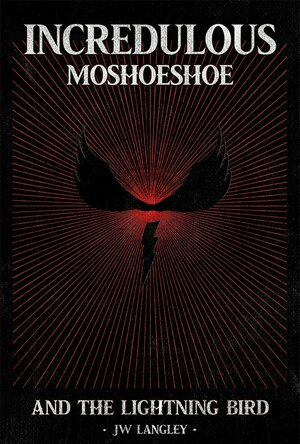
Incredulous Moshoeshoe and the Lightning Bird
Book
Nelson Mandela is about to die. Again. Leftist militants and white nationalists prepare for war...
horror urban fantasy thriller bookbuzz gothic
Matthew Krueger (10051 KP) rated My Son, the Vampire (1952) in Movies
Oct 21, 2020
Mother Riley Meets Bela Lugosi
My Son, the Vampire as known as Mother Riley Meets The Vampire as known as Vampire Over London is a good movie.
The plot: Irish washerwoman Old Mother Riley (Arthur Lucan) foils a would-be vampire (Bela Lugosi) and his misguided robot.
This was the final film of the Old Mother Riley film series, and did not feature Lucan's ex-wife and business partner Kitty McShane, whom he had divorced in 1951.
In 1963, a recut American version called My Son, the Vampire was released, featuring an introductory segment with a song by American comedian Allan Sherman.
On the suggestion of producer Richard Gordon, Bela Lugosi had travelled to the UK to appear in a stage play of Dracula, which failed. He needed money to return to the US. Gordon persuaded fellow producer George Minter to use Lugosi in a movie in London.
Lugosi was paid $5,000 for his role. The plot was taken from Abbott and Costello Meet Frankenstein.
Its a funny horror comedy.
The plot: Irish washerwoman Old Mother Riley (Arthur Lucan) foils a would-be vampire (Bela Lugosi) and his misguided robot.
This was the final film of the Old Mother Riley film series, and did not feature Lucan's ex-wife and business partner Kitty McShane, whom he had divorced in 1951.
In 1963, a recut American version called My Son, the Vampire was released, featuring an introductory segment with a song by American comedian Allan Sherman.
On the suggestion of producer Richard Gordon, Bela Lugosi had travelled to the UK to appear in a stage play of Dracula, which failed. He needed money to return to the US. Gordon persuaded fellow producer George Minter to use Lugosi in a movie in London.
Lugosi was paid $5,000 for his role. The plot was taken from Abbott and Costello Meet Frankenstein.
Its a funny horror comedy.
LeftSideCut (3776 KP) rated Horrified: Universal Monsters Strategy Board Game in Tabletop Games
Oct 31, 2020
Horrified is a co-op board game based on the beloved Universal Monsters properties, and it's pretty damn fun.
First off, I love this series of movies. I recently bought a Blu-Ray boxset of them that I've been slowly working through, and they are still as entertaining now as they were when I was a kid.
Horrified pits 2-5 players against a selection of these horror icons, requiring them to complete character specific tasks before ultimately attempting to defeat whichever beast chosen, saving villagers along the way.
The roster is made up of Dracula, Frankenstein's Monster and his Bride, The Wolfman, The Invisible Man, The Mummy, and The Creature from the Black Lagoon. Each monster brings different objectives to the table in order to slay them, adding a large amount of variety to multiple games.
You can also play around with the amount of monsters you take on at once, adding different levels of difficulty to proceedings.
At first glance, the rules and many game pieces can seen overwhelming, but once the understanding sets in (there's an extremely handy tutorial video on the games official YouTube channel), it's a fun and sometimes tense experience, that is easy enough for any player to grasp.
It really does rely heavily on co-op and strategy to secure a victory, if you don't work together, then death is all but guaranteed!
I would happily recommend Horrified to any board game fan, especially those who like a bit of horror thrown in for good measure.
A huge thank you to @Smashbomb for sending me this via a giveaway (seriously go and apply to them!). Nice one!
First off, I love this series of movies. I recently bought a Blu-Ray boxset of them that I've been slowly working through, and they are still as entertaining now as they were when I was a kid.
Horrified pits 2-5 players against a selection of these horror icons, requiring them to complete character specific tasks before ultimately attempting to defeat whichever beast chosen, saving villagers along the way.
The roster is made up of Dracula, Frankenstein's Monster and his Bride, The Wolfman, The Invisible Man, The Mummy, and The Creature from the Black Lagoon. Each monster brings different objectives to the table in order to slay them, adding a large amount of variety to multiple games.
You can also play around with the amount of monsters you take on at once, adding different levels of difficulty to proceedings.
At first glance, the rules and many game pieces can seen overwhelming, but once the understanding sets in (there's an extremely handy tutorial video on the games official YouTube channel), it's a fun and sometimes tense experience, that is easy enough for any player to grasp.
It really does rely heavily on co-op and strategy to secure a victory, if you don't work together, then death is all but guaranteed!
I would happily recommend Horrified to any board game fan, especially those who like a bit of horror thrown in for good measure.
A huge thank you to @Smashbomb for sending me this via a giveaway (seriously go and apply to them!). Nice one!
RəX Regent (349 KP) rated Dracula (English) (1931) in Movies
Mar 7, 2019
Where it all began...
Contains spoilers, click to show
The year was 1931: Two years after the success of The Jazz Singer and the final introduction of sound movies into the mainstream, sound was still revolutionising the industry. But in 1931, a bit like 3D now, there was still much confusion over to how make films, with directors, producers and actors alike, were still moving over from the suddenly dated silent era, with varying success.
Tod Browning was a man who would unfortunately find little success in the sound era, but not necessarily because he couldn't move with the times, but because his career was derailed a couple of years later by his disturbing horror pic, Freaks.
Dracula was shot THREE times. One, this one, was the conventional sound version that we all know. An other was shot at night and in Spanish for the benefit of that audience, which the studio supposedly preferred. This was quite common at this time, but little known nowadays. And the third was a straight forward silent version for the many theatres still un-equipped to handle sound.
But the styles of the silent era are all over this film. From the long silent reactions shots and the over acting, especially by Bela Lagosi in the titular role. This was also the adaptation of the stage adaptation of Bram Stoker's chiller, and was faithfully adapted from that source, hence the lack of more complex special effects, with bats on strings and fog machines, over more cinematic effects.
The transformation scenes for example, where the Count morphs from a bat to the undead human occur off-screen, rather than some form of cross fade etc. Is this a choice driven by lack of money? Lack of cinematic ambition of a choice to stick to the stage material? To be honest, I have too little knowledge or experience of Tod Browning's work to suggest a reason, but when all's said and done, it did work.
Let's be honest, this is 80 years old and is not the least bit scary and it is hard not to laugh, but in context, I'm sure it worked well at the time and the story is well conveyed. Lagosi's undead performance is hammy by today's standards but he was somewhat likable. He was very deliberate, slow and the silent era has certainly left its scars, as the subtly of sound performing was yet to take hold.
But this is the sort of film were silent melodramatic acting still worked. This is of course a piece Gothic Horror, the home of melodrama if ever there was one. This is surly a product of its time, both as the industry went through one of it's most dramatic changes, which ended so many careers as well a created so many new ones, but it's also, let's not forget, the first direct adaptation of Bram Stoker's book, besides the 1922 German version, Nosferatu, which changes a fair few details to try to get around the copyright, failing to do so mind, resulting in failed bid to have every copy of the film destroyed.
This is the film that ingrained the image of the Dracula that we know today into popular culture. This was were the Universal horror franchise began. For whatever faults it has by today's standards, it did something right.
Tod Browning was a man who would unfortunately find little success in the sound era, but not necessarily because he couldn't move with the times, but because his career was derailed a couple of years later by his disturbing horror pic, Freaks.
Dracula was shot THREE times. One, this one, was the conventional sound version that we all know. An other was shot at night and in Spanish for the benefit of that audience, which the studio supposedly preferred. This was quite common at this time, but little known nowadays. And the third was a straight forward silent version for the many theatres still un-equipped to handle sound.
But the styles of the silent era are all over this film. From the long silent reactions shots and the over acting, especially by Bela Lagosi in the titular role. This was also the adaptation of the stage adaptation of Bram Stoker's chiller, and was faithfully adapted from that source, hence the lack of more complex special effects, with bats on strings and fog machines, over more cinematic effects.
The transformation scenes for example, where the Count morphs from a bat to the undead human occur off-screen, rather than some form of cross fade etc. Is this a choice driven by lack of money? Lack of cinematic ambition of a choice to stick to the stage material? To be honest, I have too little knowledge or experience of Tod Browning's work to suggest a reason, but when all's said and done, it did work.
Let's be honest, this is 80 years old and is not the least bit scary and it is hard not to laugh, but in context, I'm sure it worked well at the time and the story is well conveyed. Lagosi's undead performance is hammy by today's standards but he was somewhat likable. He was very deliberate, slow and the silent era has certainly left its scars, as the subtly of sound performing was yet to take hold.
But this is the sort of film were silent melodramatic acting still worked. This is of course a piece Gothic Horror, the home of melodrama if ever there was one. This is surly a product of its time, both as the industry went through one of it's most dramatic changes, which ended so many careers as well a created so many new ones, but it's also, let's not forget, the first direct adaptation of Bram Stoker's book, besides the 1922 German version, Nosferatu, which changes a fair few details to try to get around the copyright, failing to do so mind, resulting in failed bid to have every copy of the film destroyed.
This is the film that ingrained the image of the Dracula that we know today into popular culture. This was were the Universal horror franchise began. For whatever faults it has by today's standards, it did something right.

